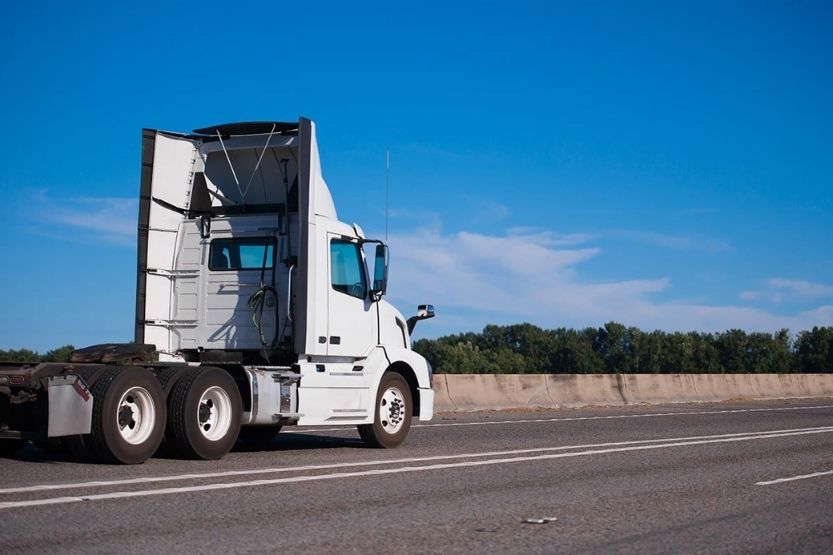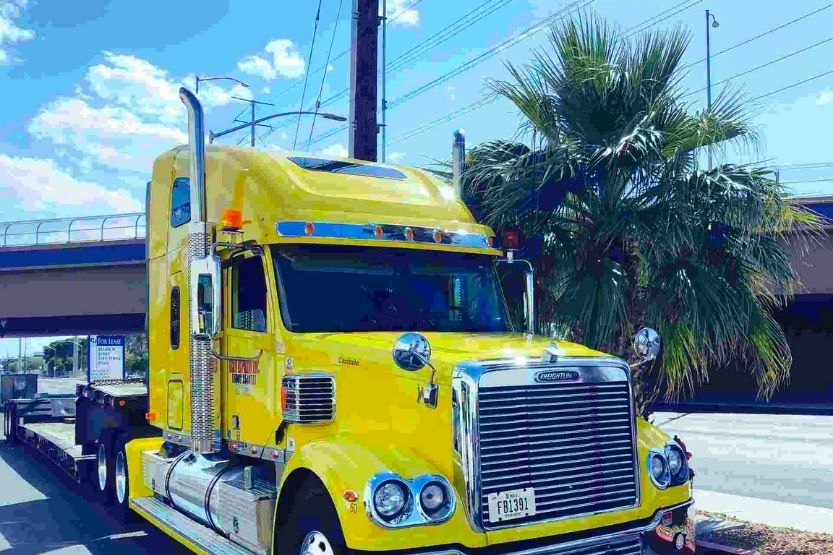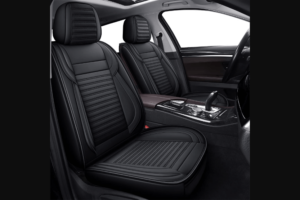A common term used in the trucking industry is “bobtail truck.” What is a bobtail truck? Why is it called a bobtail?
A bobtail truck refers to a semi-truck that doesn’t have a trailer attached to it. The term “bobtail” is said to have originated from a cat breed that features short tails. Bobtail trucks should not be confused with deadhead trucks, which have trailers attached to them but carry no freight.
Read on to learn more about bobtail trucks and why it’s called a bobtail.
About the Bobtail Truck

Bobtail trucks are semi-trucks that do not have trailers attached to them. The term originated from a cat breed that features short tails. Bobtail trucks should not be confused with deadhead trucks, which have trailers attached to them but carry no freight.
Logistics is a highly progressive business. It links producers and consumers using a supply chain network that utilizes different modes of transportation.
Numerous manufacturers hire bobtail trucks that can move their cargo from one location to another. In some cases, the cargos come from a manufacturing facility and are moved to a warehouse where sellers or distributors can get them.
There are instances too when cargos come from ports. They are then attached to bobtail trucks to be delivered to another facility.
A bobtail truck without any cargo attached to it is of no use to its owner because it will not generate any revenue at all. This is why people are often confused with the terms bobtailing and deadheading. They both refer to semi-trucks that carry no freight or cargo. The difference lies in the fact that a deadhead truck has an empty trailer attached to it.
The Origin of the Term “Bobtail Truck”
Some say the term “bobtail” was derived from the Christmas song “Jingle Bells.” But some also say it originated from a cat breed.
The song “Jingle Bells” was composed by James Pierpont in the 19th century. According to some, one of its lines is “Bells on Bobtails ring,” where the term “bobtail truck” was derived from. In this song, “bobtail” refers to the horsetail cut down to prevent it from getting entangled in the sleigh.
However, some people believe that its origin was from a cat breed that features short tails. A semi-truck that doesn’t have a trailer attached to it resembles the appearance of short-tailed cats.
Bobtail Truck Size
A bobtail truck typically measures 24 feet long. It roughly weighs 20,000 pounds with full fuel and diesel exhaust fluid (DEF) tanks, two drivers, and other stuff.
The truck’s steer axle typically weighs 10,000 pounds. At the same time, the weight of the drive axles ranges between 8,500 and 9,000 pounds.
The total weight of a bobtail semi-truck varies. It all depends on the specs, including the size of the sleeper cab.
Types of Bobtail Trucks
There are various types of bobtail trucks. These include the following:
- Semi Truck or Running Bobtail Truck
- Small Bobtail Truck
- Straight Propane Truck
Let’s briefly discuss these truck types and see if they also have differences in terms of bobtail truck size.
1. Semi Truck or Running Bobtail Truck
Earlier, we have explained that a bobtail truck is a semi-truck that does not have any cargo attached to it. So, obviously, a Running Bobtail Truck is a small-size semi-truck without a trailer.
When we say semi-truck, it consists of two components. These include the tractor unit and the trailer. A fifth-wheel-type hitch connects the tractor unit with the trailer.
2. Small Bobtail Truck
Small- to medium-size semi-trucks typically have their axles attached to the same chassis. If these trucks travel without any trailer attached, they are referred to as Small Bobtail Trucks.
The applications of these trucks are generally limited to light- or medium-weighted cargos. These trucks are typically used for bakery product transportation, egg transportation, or dump carrying.
3. Straight Propane Truck
Small semi-trucks can be easily converted to propane trucks. Tanks can be fitted on the rear bed truck. Rounded shape tanks allow the contents to maintain sufficient pressure and temperature while in transit. These tanks have a storage capacity of roughly 5,000 gallons.
Propane trucks are highly essential when transporting propane or gasoline to fuel stations and automotive dealers.
The Danger of Driving Bobtail Trucks

There are several reasons why driving bobtail trucks is dangerous. These include the following:
- Inadequacy of Control over the Vehicle
- Reduced Braking Power
- Less Friction Produced
- Increased Speed
- Compressibility of the Spring Suspension
- Varying Braking Distance
- Wet or Snowy Roads
Let’s briefly discuss them:
1. Inadequacy of Control over the Vehicle
A bobtail truck’s steering wheels are the front wheels. They are, in essence, less load-bearing. Therefore, they can provide sufficient control over the truck.
This is not the case when a bobtail truck’s configuration reverses the role. When the front wheels bear most of the load, it will be harder for the driver to control the truck.
2. Reduced Braking Power
The braking system of a semi-truck is on the rear wheels. This is because the design of a truck mainly takes into consideration its loaded condition.
A bobtail truck’s configuration decreases the braking power. This is due to the restricted weight on the rear wheels. When the brake is pressed hard, the rear wheels seize. The truck then tries to pivot around the front wheels.
3. Less Friction Produced
The primary mover of semi-trucks is their frictional force. If there is less weight on the rear wheel, then it will produce less friction. Insufficient frictional force can result in skidding. Worse, it can make the truck overturn during tight curves or sharp turns.
4. Increased Speed
A semi-truck with an empty trailer attached to it picks more speed than a fully loaded truck. Logically speaking, a bobtail truck picks more speed than a semi-truck with an attached trailer. This is because a bobtail truck does not have anything attached to it at all. So, if the driver fails to control the truck, it can lead to an accident.
5. Compressibility of the Spring Suspension
If the truck has no freight to carry, it will have an impact on the spring suspension. Its compressibility will not work correctly.
6. Varying Braking Distance
During bobtailing, the braking distance of trucks dramatically increases. That’s why truck drivers need to keep an adequate distance from other vehicles. In the same manner that other motorists must keep their distance from trucks at all times.
7. Wet or Snowy Roads
It is always risky for all motorists to drive during snowy or wet conditions. But it is more hazardous for bobtail truck drivers. When bobtailing, the frictional force between the road and the tires significantly decreases.
Again, what is a bobtail truck? A bobtail truck is a semi-truck that doesn’t have a trailer attached to it. The term “bobtail” is said to have originated from a cat breed with short tails. Bobtail trucks should not be confused with deadhead trucks, which have trailers attached to them but carry no freight.
A bobtail trailer is the trailer that is intended for a bobtail truck.
What Is Bobtailing?
“Bobtailing” in the trucking industry means driving a truck tractor without its trailer attached.
There are two scenarios where bobtailing occurs.
The first one is when a person drives a bobtail truck to pick up cargo. Typically, the drivers will move their trucks out of the terminal and drive to the dispatch site. At the dispatch site, drivers will each be assigned a cargo that they will attach to their trucks.
This process of traveling from the terminal to the dispatch site without anything attached to the track is called bobtailing.
The second scenario is when the drivers have finally dispatched their cargos. They travel back to the terminal without any trailers attached to the trucks. This is because they have already unloaded their cargo or trailer. The trailer is sometimes referred to as a “bobtail trailer.”
Aside from being called bobtailing, this is also described as the last stage of the entire logistics process.
Truckers Dislike Bobtailing

There are several reasons behind the disinterest of truckers in bobtailing. These include the following:
- Generates No Revenue
- It Is Dangerous
- Exhausting
- Challenging During Rainy or Snowy Season
1. Generates No Revenue
Truck operators hate bobtailing. This is because their trucks have to travel without generating any revenue.
When bobtailing, truck operators have to pay for fuel. Also, if truck owners don’t drive their own trucks, they have to hire drivers. They have to pay these drivers even if the task does not generate any revenue.
2. Dangerous
Bobtailing is exceedingly hazardous. It makes the truck unstable, including its braking power. That’s why bobtail truck drivers need to adapt to changes quickly. They should adjust their driving skills when they are carrying freight and when they are merely bobtailing.
3. Exhausting
Bobtail trucks are exhausting to drive. The ride is bumpier compared to when there is a cargo attached to it. That’s why bobtail truck drivers have to be way more attentive when driving.
4. Challenging During Rainy or Snowy Season
All motorists will agree that driving during rainy or snowy seasons is challenging. In the case of bobtail truck drivers, it is even more challenging.
Safety Precautions for Bobtailing
People think that driving a bobtail truck to pick up cargo is the easiest task of a truck driver. Also, after dispatching the cargo, many think that the most difficult part of truck driving is over.
Bobtailing poses several risks that can, unfortunately, lead to fatal accidents. That’s why bobtail truck drivers need to be cautious at all times.
Here are different scenarios and the corresponding safety precautions that truck drivers can practice to avoid accidents:
- Less Control over the Brakes
- Can’t Use Engine Retarders
- Truck Clearance May Be Higher
- Check Weather and Road Conditions
- Look out for Other Bobtailing Truckers
1. Less Control over the Brakes
Bobtail truck drivers have less control over the brakes. That’s why they need to take their time and limit their driving speed.
They should put less pressure on the brakes. It is important to increase their following distance too to prevent slamming on the brakes. Lastly, it’s always important to recheck the vehicle clearance.
2. Can’t Use Engine Retarders
An engine retarder refers to a device to help heavy vehicles slow down. This is particularly useful when the truck is going downhill. It will prevent the braking system from wearing down.
However, the engine retarder is not safe when bobtailing. There’s no adequate weight on the rear wheels that will provide traction. It then tends to make the drive axles suddenly decelerate.
To prevent unfortunate events, bobtail truck drivers should ensure that the engine retarder is switched off. They should reduce pressure on the brakes and increase the following distance. It’s also important to avoid applying sudden brakes to avoid losing control.
3. Truck Clearance May Be Higher
Truck clearance refers to the minimum distance between the axle and the base of the truck’s tire. If there’s higher than normal truck clearance, it can collide with a tunnel, a signpost, or other objects on the road. There’s a tendency for the truck to flip over too.
There’s a difference in truck clearance when the truck is loaded and unloaded. So, the best thing to do is to always check the clearance before driving.
4. Check Weather and Road Conditions
It’s quite challenging to drive a bobtail truck on normal days. But it’s even more difficult when bobtailing on snowy, slippery, or wet roads.
During bad weather conditions, it’s always best to reduce driving speed. It’s also recommended to increase the distance from other vehicles.
5. Look Out for Other Bobtailing Truckers
Even if truck drivers are not bobtailing, they should look out for those who do. That way, they can be extra cautious around bobtail trucks they see on the road. Then, again, always increase the distance from them.
Conclusion – Bobtail Truck [What Is It? Why Is It Called a Bobtail?]
Bobtail trucks are semi-trucks that do not have trailers attached to them. The term is said to have originated from a cat breed that features short tails. Bobtail trucks should not be confused with deadhead trucks, which have trailers attached to them but carry no freight.
It is important for new truck drivers and even experienced ones always to remember that bobtailing is a challenging task. It poses a different challenge from driving a loaded truck. So, whether you’re driving a bobtail truck or a loaded one, always remember to keep your presence of mind when driving.
Related reading:


![What Is the Front of a Car Called? [All About the Front] what is the front of a car called](https://roadsumo.com/wp-content/uploads/2022/05/what-is-the-front-of-a-car-called-150x150.jpg)

![Battery Light on Dashboard [9 Reasons Why It's On] battery light on dashboard](https://roadsumo.com/wp-content/uploads/2022/03/battery-light-on-dashboard-150x150.jpg)


![Read more about the article Are Nissan Altimas Good Cars? [Nissan Altima Reliability]](https://roadsumo.com/wp-content/uploads/2022/04/are-Nissan-Altimas-good-cars-300x200.jpg)
![Read more about the article What Is an Airstream? [All Airstream Models]](https://roadsumo.com/wp-content/uploads/2021/01/what-is-an-Airstream-300x200.jpg)
